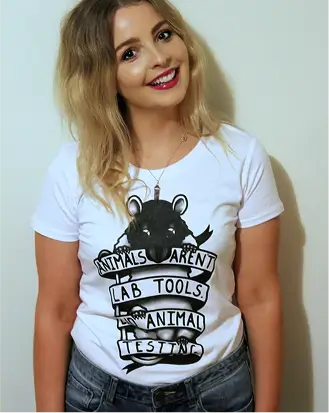TOTAL ANIMALS USED: 301,335
A total of 301,335 animals used for research, testing and teaching purposes were reported in 2018, that is 13,236 less than the previous year.
The rolling 3-year average was 289,990 animals, up 25,342 from the previous year.
NUMBER OF ANIMALS WHO DIED: 105,024 (35%)
A total of 105,024 died or were euthanised during, or after, manipulations (including animals who were killed for the purpose of using their tissues). This is 35% of the total number of animals used that year.
A new category of animals was included in the annual animal usage statistics in 2018. Due to the amendment of the definition of manipulation in the Act, animals that were killed for the purpose of using their tissues for research, testing or teaching purposes but did not undergo any prior manipulation were included in the annual statistics. In 2018, 14,308 animals were included in this group.
PURPOSES
Animals were used in the following ways in 2018:
- Basic biological research: 91,210
- Veterinary research: 63,253
- Teaching: 37,096
- Animal husbandry research: 12,014
- Medical research: 23,125
- Testing: 28,049
- Environmental management research: 28,309
- Species conservation: 7,402
- Other: 6,085
- Production of biological agents: 4,211
- Development of alternatives: 181
- Producing offspring with compromised welfare (a new category): 400
TYPES OF ANIMALS
The following categories of animals were used in 2018:
- Amphibia: 258
- Birds: 8,229
- Cats: 701
- Cows: 102,520
- Cephalopods/crustaceans: 4,349
- Deer: 1,968
- Dogs: 2,624
- Fish: 55,926
- Goats: 11,429
- Guinea pigs: 2,404
- Horses/donkeys: 918
- Marine mammals: 1,710
- Mice: 47,983
- Pigs: 1,479
- Possums: 2,030
- Rabbits: 1,291
- Rats: 22,222
- Reptiles: 4,001
- Sheep: 29,056
- Misc. species: 237
ORGANISATION TYPE
The following types of organisations used animals in 2018:
- Universities: 103,786
- Commercial organisations: 120,220
- Crown Research Institutes: 39,880
- Other (non-university medical research institutes, zoos/wildlife parks and individuals): 24,266
- Government departments: 3,237
- Polytechnics and institutes of technology: 7,812
- Schools: 2,134
SOURCE
Animals were sourced from the following places in 2018:
- Farms: 111,225
- Breeding units: 72,072
- Captured: 55,924
- Commercial sources: 26,368
- Public sources: 19,312
- Born during project: 15,990
- Imported: 444
More Info
The most commonly used species in 2018
Cows were the most used species in 2018 followed by fish, mice and sheep.
“OTHER” species used
In 2018, 237 animals were reported in the “other species” category. This group was made up of:
- African pouched rats: 10
- Bats: 44
- Chimpanzees: 5
- Elephants: 2
- Giraffes: 3
- llamas: 2
- Alpacas: 21
- Chinchillas: 2
- Ferrets: 32
- Hedgehogs: 25
- Stoats: 66
- Wallabies: 21
- Spider monkeys: 4
More info on the use of the non-human primates
Chimpanzees: Blood samples were taken from five chimpanzees held in New Zealand zoos who were being anaesthetised for other purposes. The blood samples were to be used to investigate the effects of the anaesthesia on the physiological homeostasis of the animals.
Spider monkeys: The report only states that these animals were used for basic biological research. We don't currently have any additional information on the use of these animals.
Animals imported into NZ
A total of 444 animals were imported into New Zealand for research, testing and teaching purposes in 2018. These included 428 mice, 10 rats and 6 horses.
- Animal Use Statistics Report for 2018 published by MPI (made public July 2020).
- Find out more about the animal manipulation forms (for example the definitions of the different purposes) here: Animal Use Statistics – Guidance for Completing Statistical Returns.





